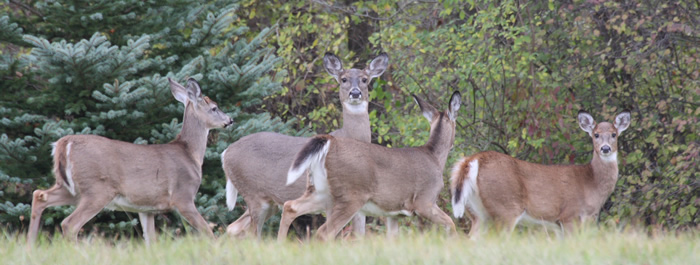We have written blog posts about how the most important component of a deer population is adult females. Their survival primarily determines whether a deer population increases or decreases. But as usual, they get snubbed. When it comes to survival or mortality, fawns still get all the attention – I guess because they mostly die from 4-legged predators instead of 2-legged predators.
Also, we have written how fawn survival in Pennsylvania is not a concern because
- our fawn survival rates are above-average, and
- any changes in fawn survival can be countered with changes in antlerless harvest.

Interestingly, a recent study came to the same conclusion in Louisiana. Researchers monitored fawn survival and adult female survival to investigate population growth and harvest potential.
The predator suite on the 120-mi2 study area included bobcats, coyotes, and a restored population of Louisiana black bear (Ursus americanus luteolus, a subspecies of the American black bear).
Fawn survival rates on their study were only 27% – which is about half of what they are in Pennsylvania (~60%).
Survival rates for yearling females was 85.7% and for adult females 81.5% – similar to Pennsylvania.
Are these fawn survival rates worrisome for our southern counterparts? Nope. Basically, it’s what we’ve been saying all along – with fawn survival as low as 25% and adult female survival about 80% or greater, a deer population will be stable or increasing.
In fact, in this Louisiana study, researchers estimated that with the current survival and harvest rates the population was increasing at a rate of 6% per year! To stabilize it, they estimated yearling and adult female harvest rates would have to increase to be just under 20%.
If the antlerless harvest were completely eliminated, the population would grow by 15% per year. Under that scenario, the population would double in 5 years.
More evidence showing that throughout most of the range of the white-tailed deer, populations can be managed by adjusting the antlerless harvest – regardless of fawn survival rates.
-Duane Diefenbach
